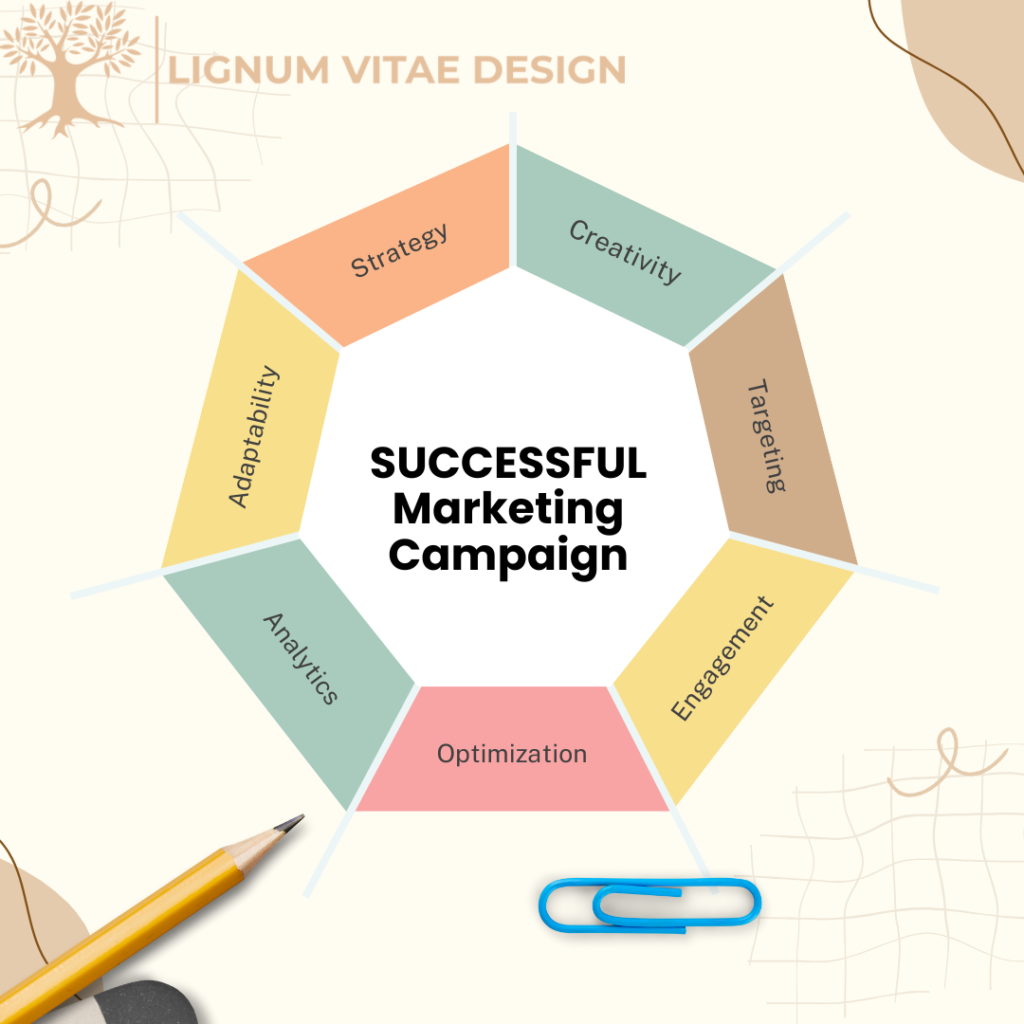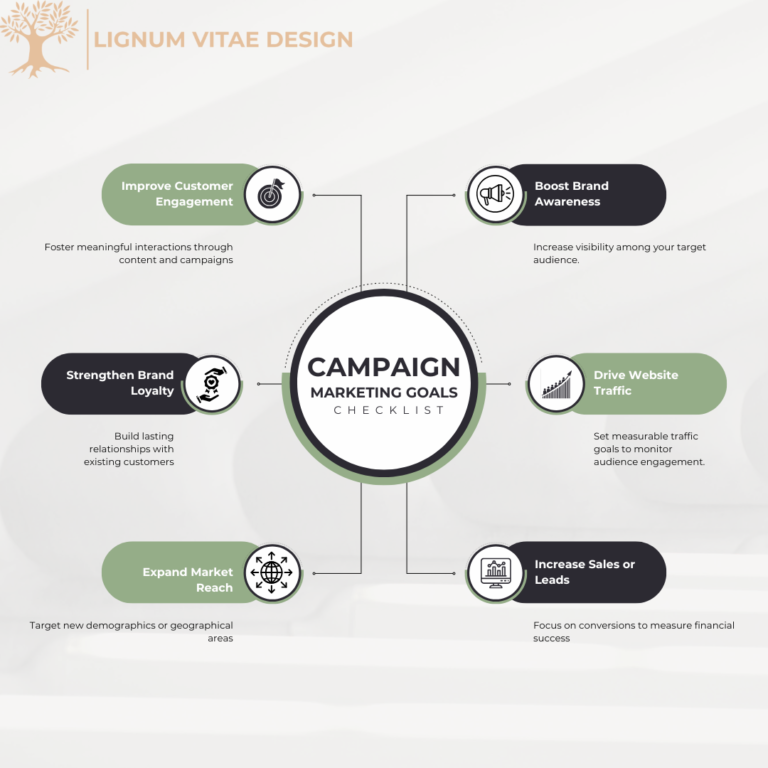
A successful marketing campaign can elevate a brand, increase sales, and strengthen customer loyalty. However, the journey from idea to execution is complex, requiring a blend of strategic planning, creative execution, and continuous evaluation. In this article, we explore the essential elements needed to create and run a successful marketing campaign, ensuring that every stage contributes to your overall marketing goals.
Define Your Marketing Goals for a Successful Marketing Campaign

Setting Clear and Measurable Objectives
Before diving into campaign planning, you must first define your marketing goals. These objectives will guide every decision throughout the campaign and ensure that efforts are aligned with your brand’s vision.
Successful marketing campaigns always begin with clear goals. Whether you aim to boost brand awareness, increase sales, or enhance customer engagement, having measurable goals helps track progress. For instance, you might set goals like increasing website traffic by 20% in three months or achieving a specific sales target.
By setting goals, you can determine campaign success. Furthermore, it helps in resource allocation and defining key performance indicators (KPIs).
Understand Your Target Audience for a Successful Marketing Campaign
Why Audience Research Is Essential
Your target audience is at the core of every successful marketing campaign. Without a clear understanding of who you’re trying to reach, your efforts may not resonate with them.
To start, research your audience’s demographics, interests, and pain points. What are their challenges, and how can your product or service provide a solution?
Customer personas, which represent your ideal customers, are helpful tools in this process. By crafting detailed personas, you can ensure that your marketing messages speak directly to the needs and desires of your audience.
Develop a Strong Marketing Strategy
Building the Blueprint for Success
- Channel Selection: Will you use social media, email marketing, paid ads, or a combination?
- Content Creation:What type of content will resonate with your audience (videos, blogs, or infographics)?
- Budgeting:How much will you spend on each channel and activity?
Focus on Creative Marketing for a Successful Marketing Campaign
Creative Marketing: The Key to Differentiation
Creative marketing makes your campaign stand out. It grabs attention, sparks interest, and leaves a lasting impression.
Creativity goes beyond visuals. It includes your messaging, tone, and style. Whether through humor, bold visuals, or a compelling story, creativity should support your goals.
Ensure your creative elements align with your brand identity. This consistency builds trust and strengthens your campaign.
Why Timing Matters in Marketing
Timing is critical for any successful marketing campaign. Without a well-structured timeline, even the best strategies and creative ideas can fall flat.
Map out each stage of your campaign, from initial planning to final execution. Ensure you have deadlines for content creation, approvals, and launch dates. You also need to plan for post-launch activities, such as analyzing campaign results.
Campaign planning involves flexibility. While it’s important to stick to a timeline, you may need to adjust if unforeseen challenges arise.
Execute the Campaign Effectively
Bringing Your Plan to Life
Timing is crucial. Without a clear timeline, your campaign could feel rushed or poorly coordinated.
Map out each stage of the campaign. Set deadlines for content creation, approvals, and the launch date.
A well-structured timeline ensures every element is ready on time. However, be flexible—adjust as needed if new challenges arise.
Measure the Performance of Your Successful Marketing Campaign
Tracking Key Metrics for Success
Tracking and measuring the effectiveness of your campaign are essential for understanding whether you met your goals.
Use KPIs to evaluate success, such as:
- Engagement Rates: Likes, shares, comments, and interactions on social media.
- Conversion Rates: The number of leads or sales generated from the campaign.
- ROI in Marketing: The return on investment, indicating the financial success of the campaign.
By measuring campaign performance, you can determine which elements worked and where improvements are needed.
Analyze and Optimize for Future Marketing Campaigns
After a campaign concludes, the work isn’t finished. It’s crucial to reflect on performance, learn from the outcomes, and apply that knowledge to future efforts. By evaluating key metrics such as engagement, conversion rates, and ROI, marketers can pinpoint strengths and areas for improvement. Continuous optimization ensures that each campaign becomes more efficient, delivering better results with each iteration.
Leveraging AI for Enhanced Campaign Analysis
AI tools provide marketers with powerful capabilities to automate analysis and gain deeper insights:
- Automated Data Processing: AI can quickly analyze vast datasets, streamlining the identification of trends and performance gaps.
- Predictive Modeling: AI helps forecast potential outcomes based on current data, allowing for proactive adjustments.
- Advanced Personalization: By analyzing audience behavior, AI recommends highly tailored strategies, enhancing engagement and conversion rates.
- Sentiment Analysis: AI tools process social media and customer feedback to gauge audience sentiment, refining messaging in real-time.
Conclusion
Running a successful marketing campaign requires careful planning, creative execution, and continuous evaluation. Start with clear goals, understand your audience, and develop a strong strategy. Keep the creative elements fresh and aligned with your brand identity. Measure results and optimize for future growth.
Each campaign offers valuable insights. Use these to improve your strategy, ensuring your next campaign is even more successful.